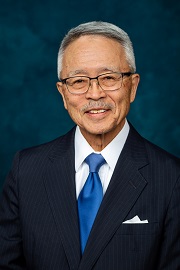
Prior to the pandemic, a common business complaint was “too many meetings.” Throughout the pandemic, these meetings have evolved to videoconference / virtual calls as many of us began working from home at levels we had never experienced before. Many of the changes brought some advantages and some created new complaints. Now, rather than returning to all of our pre-pandemic work habits, we have found them changed into a hybrid model. As we navigate working both in-person and virtually, we thought it might be a good time to reflect upon some pandemic learnings and consider how to use them to reconstruct better post-pandemic processes. Here are observations from some of the R|L Executive Coaches.

Clyde Lowstuter, MCC |
Create an Experience not “Just Another Meeting”
During the pandemic we found the greater the level of engagement in a meeting, the more productive the meeting was as people more readily voiced their ideas and opinions. R|L found experiential learning was one way to stimulate livelier discussions and decision-making. For example, invite a couple of panelists into your virtual meeting. These senior leaders will discuss critical business issues and ask questions of the participants by inviting them into the “hot seat” where their video is Spotlighted for all participants as they come up to bat to share their perspectives. With a lighthearted touch, this exercise can provide exclusive focus on the issue at hand, while at the same time sharing the floor with everyone. The panelists will continue to rotate team members in and out of the “hot seat” as challenges are discussed. Debrief the experience, reinforce the key learnings, and determine what actions can be taken from that experience. If your meetings aren’t being talked about after the fact, you are not trying hard enough! |

Carolyn Lowstuter |
Career Recognition & Advancement
While we’ve learned that virtual work is here to stay, at least in some aspects, one disadvantage I’ve been surprised by is a reduction in recognition. Even with a hybrid of being in the office a couple of days a week, executives share that they are limited in being able to observe the typical “work in progress.” Rather than noticing the tasks being accomplished and, more importantly, how those tasks are completed, they see only the final outcomes—often months later. More often than not, working in greater isolation, leaders miss the natural feedback loop and closer understanding of critical priorities shared informally by their bosses in on-site settings. One way to combat this is to ask for short, regular 1-on-1 meetings with your boss and be prepared to communicate what you and your team have been accomplishing. Learn what your boss needs/wants and proactively make their lives easier. It may take a little more ingenuity to achieve recognition, but evidence of interest, eagerness, and dedication will show up in all environments. |

Pat Mater |
Going the Extra Mile
Virtual meetings don’t always provide the “chit-chat” that occurred when people were getting settled around the table at the beginning of a meeting. During the meeting, some found that meetings didn’t feel as personal as they used to. With so many people in new jobs, people are working with others they had only “met” online. To offset these challenges, one good approach is that after a meeting, pick up the phone and call the new person to personally introduce yourself and spend a few minutes finding out about their background—both personally and professionally. This also works if YOU are the new person, to help you get acquainted with your new colleagues. Since it is likely there will be a continuation of a hybrid approach of in-person and virtual meetings, this will go a long way to ensure making lasting connections. |

Dave Dallam |
Forge Strong Interpersonal Relationships
I remember my first reaction to the iPhone. It seemed a great tool for everything other than its use as a telephone. Little could we foresee the fundamental paradigm shift that was beginning. Today, we have dramatically reduced the use of our phones for conversation in favor of texting and emailing. We hear of relationship breakups over Facebook, where we label remote acquaintances as “friends.” Phones, apps, and the internet make life “easier,” yet often this “easier” is based on a distancing of us from each other. COVID-19 cemented this evolution in place, along with some new forces: virtual meetings replaced in-person meetings, and hallway/watercooler interactions disappeared. Our “modern conveniences” threaten our skills and our interest in building strong interpersonal relationships. But no one would advocate for a return to an era of “too many meetings to get anything done.” We couldn’t if we tried. However, as we try to return to some pre-pandemic practices, let’s remember and protect our abilities to forge strong interpersonal relationships through face-to-face interaction, conflict management, and a renewed focus on our display of empathy. Let’s reflect on and reinforce the things that have, or can, make us better people in relationship to one another. |
|
Ron Hirasawa |
Hit the Record Button! One of the best-kept secrets of virtual meetings is to record the decision-making meetings. While you can still encourage small talk in the gallery prior to the meeting, hit the record button as you formally begin. That way, others who can’t attend are able to hear directly the rationale and implications for decisions that are raised during discussions. Most would agree that people sharpen their games when they are being recorded: the conversation remains better focused on the critical issues at hand and individuals are more respectful of one another with fewer sidebar chats. Factual data collection finds its way more frequently into up-level business case presentations when recorded. It also limits the number of “rehash” meetings as the dialog can be reviewed again. Ready for better decision-making meetings? Try recording. Please be sure that you have permission from your participants. |

Kathryn Hartrick |
Curiosity and Connection
The virtual meetings with coaching clients over the past two years have provided a great opportunity to get to know my clients in a different capacity. We have met under wide-ranging conditions and have shared a range of emotions during the different issues and challenges that arose from the unprecedented circumstances of the pandemic. I have had the honor of meeting many spouses, children, and pets along the way. Many clients have met my husband, Bob, who sometimes walks past my office when I am in a meeting (during those times I put on my headset to ensure confidentiality and privacy). I have used the honor of entering a client’s home to learn more (What about that art piece in the background, or the wallpaper or color of paint in a room?); there have been meetings taking place from cars and the tackling together of technical difficulties. I have shared with clients special coffee mugs, inspirational quotes, and my favorite –selecting a word each year that resonates as something to work on. The list of ways we have embraced “curiosity” (my chosen word for 2022) and connections goes on and on. My clients and I have explored how to be better at non-verbal communication, how to connect through the use of company goals/tenets, how to be better listeners, how to use empathy in leadership, and how to follow up individually when it appears a team member had more to say during a group meeting than they actually shared. The opportunities are endless. As we embark on the post-pandemic and, for many, a hybrid work experience, I hope to embrace and celebrate continued curiosity, adaptability, and resiliency. Here. We. Go! |

